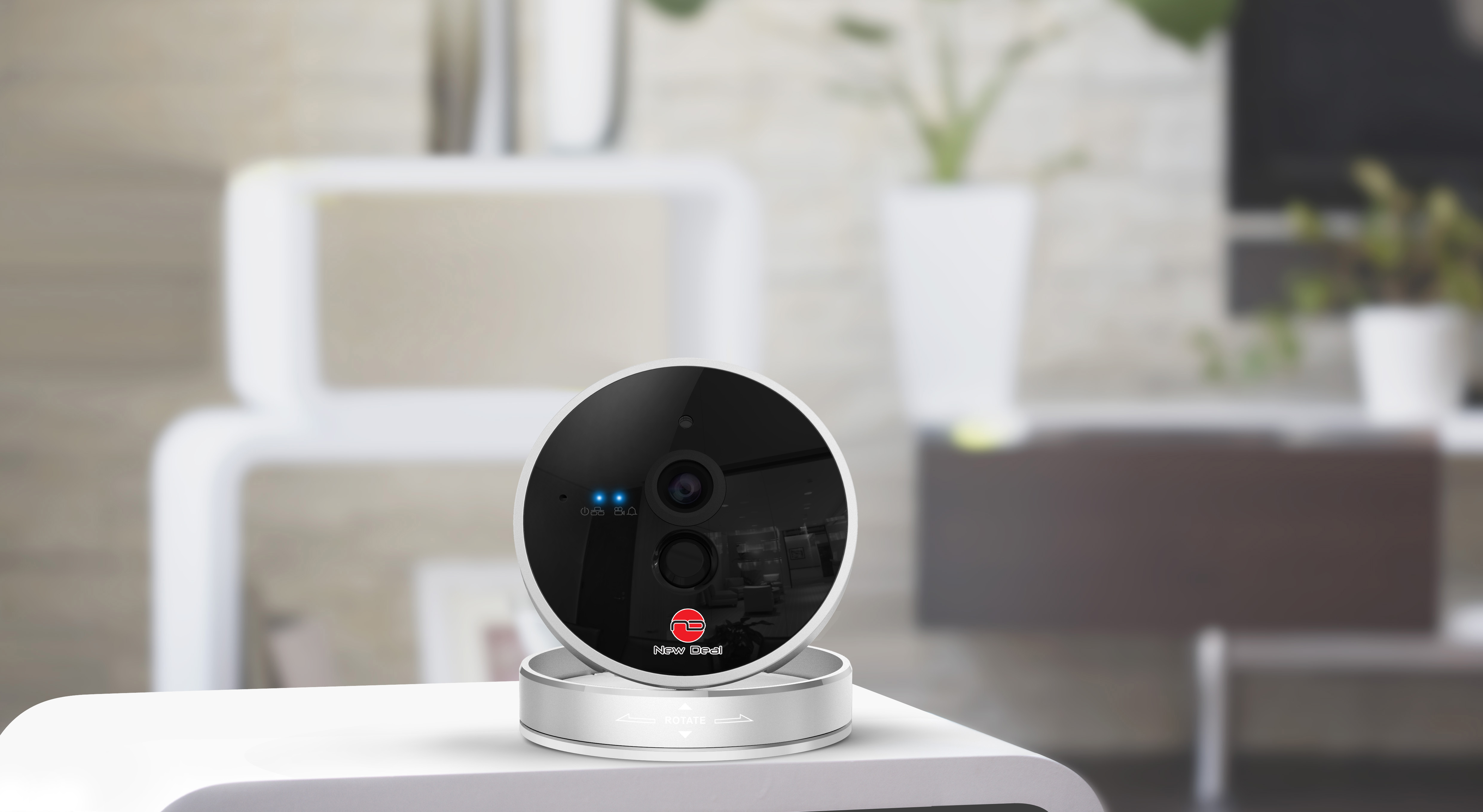Security is one of the essential components of what is commonly referred to as the “Smart Home”. Surveillance is what these small IP cameras do best; they serve as tiny sentinels that watch over your home in your absence. If any movement is detected, you are immediately alerted via your smartphone which you can also use to access your cameras at any time – without the need for a computer.
The installation of this type of personalized and economical video surveillance system can be done without professional assistance: all of the cameras hand-picked and tested by Tom’s Guide can be installed by just about anyone. The manufacturers of these cameras claim that their systems only take a few minutes to install, but as you will read further on, this is not always the case.
What’s more, these systems vary greatly in their interpretation of “security”. Withings‘s Home system, for example, does not simply detect intruders, it also measures the quality of your home’s air and will even keep an eye on your baby for you. Another popular use for this type of system is to keep an eye on the family cat or dog and to reprimand it (by means of a speaker) if necessary. These products are also becoming increasingly aesthetically conscious: some models no longer look anything like a conventional camera – an important consideration for anyone wanting to preserve their home’s decor.
Best price-performance ratio
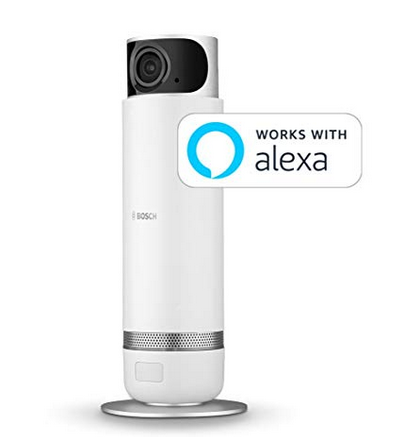
Most practical
The Arlo Pro 2 kit – comprising two cameras and a WiFi base station – has preserved all of the things that make the charm of the Arlo product line, namely its entirely wireless operation thanks to a rechargeable battery. It also has several other noteworthy characteristics such as its Full HD quality video, IP65 certification, numerous settings (geolocalization, detection zones…), and free cloud storage for 7 days. However, during our testing of the Arlo Pro 2, its installation proved to be a little tricky.
Is an IP surveillance camera easy to install?
An IP surveillance system’s camera needs to be placed in proximity to an electrical outlet (except in the case of the Arlo which uses rechargeable batteries and the Arlo Pro which has a rechargeable power pack). The system’s camera will also need to be connected to your local network, and through it, to the internet. There are two ways in which to establish this connection: either via an Ethernet cable or via WiFi. Some cameras are equipped with both options, allowing you to choose the one that best suits your needs. Ethernet has the advantage of providing a more stable connection than WiFi and does not require a password. However, connecting via Ethernet means having an extra cable lying around; it also means plugging your camera directly into your internet box unless your home is wired with Ethernet cables or you use a CPL system (sold separately). WiFi offers greater flexibility, even though its range within your home will be limited to between 10-20 meters depending on the thickness of your walls. However, WiFi connections are not immune to disturbances which could result in the disconnection of your cameras – especially if your WiFi signal is shared by many wireless devices. With this in mind, Netgear’s supplementary WiFi relay is quite interesting since it creates a separate WiFi network reserved for the Arlo Pro 2’s camera.
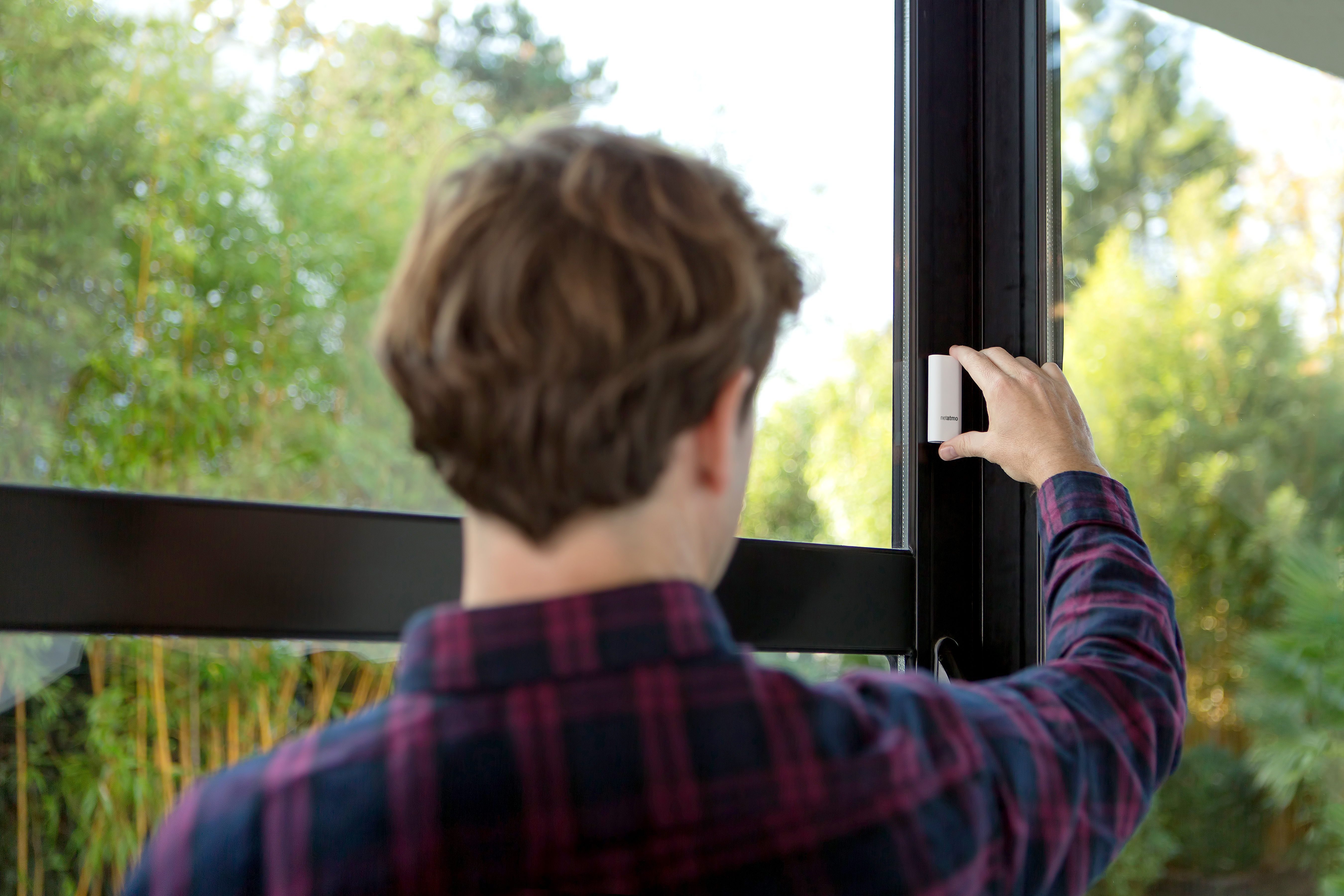
Can these cameras be installed outdoors?
Of the products included in our comparison, only Netgear’s Arlo Pro 2 can be installed outdoors because of its IP65 certification which ensures its resistance to humidity and dust.
However, it is far from being the only camera on the market that can be used outdoors. In fact, outdoor cameras have become quite popular in the last few years. These outdoor cameras have the advantage of being able to detect eventual intruders before they break in. Most manufacturers have a dedicated outdoor model: Netatmo has its Presence, Nest has its Cam Outdoor, Bosch has its Eyes, Somfy Protect has its Outdoor Camera (which will come on the market next September)… The functionality and hardware of each of these cameras can vary greatly. Presence, for example, is equipped with an 8 GB memory card as well as a spotlight; it is also capable of differentiating between a human and an animal or a car. Somfy Protect’s Outdoor Camera, on the other hand, is equipped with a siren and a motion sensor. The only thing these cameras have in common is that they are all weatherproof.
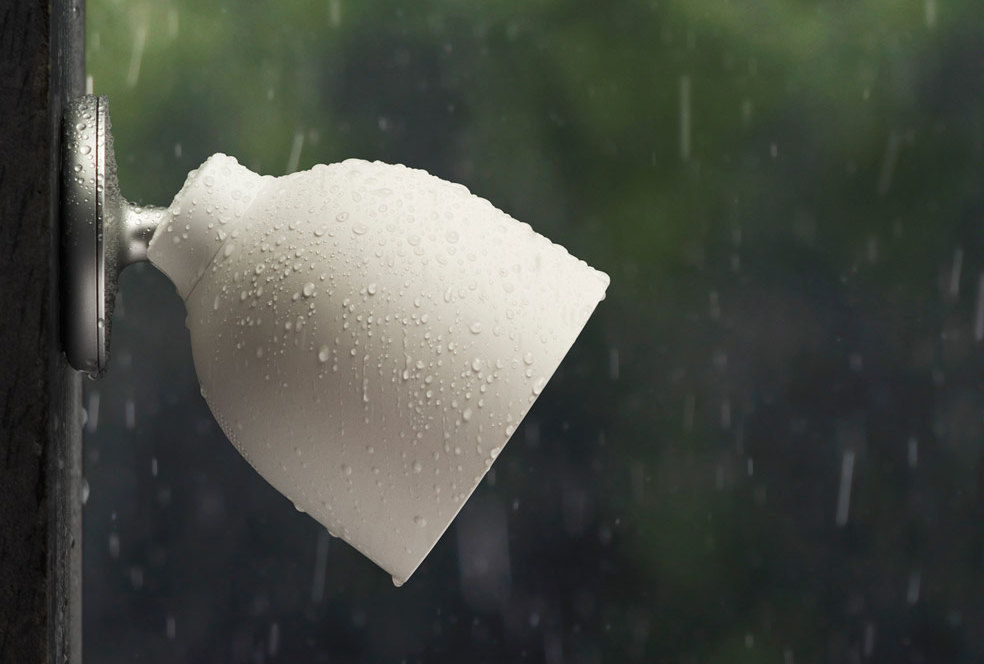
Next, you will need to find a way of powering your outdoor camera. Given that Presence is equipped with a spotlight, it could be installed in place of a lamp and connected to existing wiring. Nest’s Cam Outdoor, on the other hand, requires an external power outlet (unless you drill a hole through your wall to power it from indoors). While battery-operated outdoor cameras are quite rare, Netgear’s Arlo Pro 2 cameras and Ring’s Spotlight Cam Battery are both battery powered.
One thing is clear: installing an outdoor camera is not as easy as installing an indoor camera and could require some basic DIY work. Nest, Netatmo, and Somfy Protect all offer a professional installation service for their respective products. While this service is not free, it could be a good option for anyone worried about doing a poor job of installing their outdoor camera.
How many cameras can be installed in total?
While some manufacturers give a clear answer to this question (Nest, for example, has a limit of 10 Nest Cam cameras), other manufacturers do not make any mention of such a limit. The main limitation will be your home network’s data transfer capacity and your internet connection’s ability to “absorb” all of the various video streams. For example, at maximum image quality, a Nest Cam camera, connected to the cloud (read more about this later) requires an average bandwidth of 450 kbit/s while the average bandwidth of a standard ADSL connection rarely exceeds 1 Mbit/s.
How many people can control the camera?
While the person who creates an account is generally the camera’s owner, Somfy Protect and Netatmo, for example, allow for the creation of other user accounts (for a spouse, babysitter or any other trusted person…) with full access to all of its cameras’ features. You can also temporarily share access to your camera; Somfy Protect and Netgear both allow you to share access to your camera with a friend when you go on vacation for instance. As such, your friend will also receive any alerts generated by the system and will be able to perform a visual inspection of your property (to determine if there has been a break in for example; remember don’t be a hero, call the police!).
Where is the recorded footage stored?
There are two ways to record your camera’s video footage: cloud storage (very popular these days) or memory card storage. When using the first of these two options, the cloud server acts like a remote VCR – recording all of your camera’s video streams (continuously or whenever the camera is triggered). The lifespan of these recordings will vary depending on your cloud storage package: 1 day, 1 week or even longer. Manufacturers are quick to point out that cloud storage is able to preserve your video footage in the event that a thief steals your camera. While they are not wrong, unfortunately, cloud storage is often a paid service. Nevertheless, competition has motivated some manufacturers to offer free cloud storage; Withings offers two days of free storage, Netgear offers a full week of free storage (of video sequences generated upon the detection of motion), and Bosch offers 15 days.
The other method of recording consists of using a memory card which is inserted into your camera. This is the method utilized by Netatmo’s Welcome, for example, which comes with an 8 GB memory card. According to Netatmo, this amount of storage space is enough to record around 100 video sequences (recordings triggered by the camera’s motion sensor). Given how inexpensive memory cards are, this is a very economical method of recording. However, as previously mentioned, if your camera is stolen, all of your recordings will be gone! Fortunately, it is also possible to implement a free method of remote recording via Dropbox or an FTP server. You should also realize that even when recording to a memory card, any IP surveillance camera will still require an internet connection. As a result, if your secondary residence is not equipped with an internet connection, you will not be able to use an IP surveillance system to protect it.
As far as video recording is concerned, Bosch’s camera stands alone: its video streams are recorded to an 8 GB microSD card (which is supplied) as well as being copied to the cloud where they can be stored for free for up to two weeks.
Since D-Link’s camera is incapable of recording video, you will be required to view its video stream in real time and manually capture screenshots of what you are viewing. Nevertheless, it is compatible with network drives, or NAS systems (which will enable you to record your video streams locally without incurring the added expense of cloud storage). D-Link’s camera is the only IP camera on the market with this type of compatibility. As a matter of fact, most new IP cameras are not compatible with standard transfer protocols such as Onvif. Consequently, their video streams can only be viewed via their mobile app and cannot be sent to a third-party product such as a NAS or a home automation box (for storage).
Is an IP camera’s image quality an important consideration?
The best IP cameras generate high-definition video streams (1920×1080 pixels at 30 images per second), however, since these video streams must transit via your local network or the internet, they are subject to a high degree of compression which can cause them to lose their sharpness and/or fluidity. In low light conditions, IP cameras rely on infrared diodes (which have a range of several meters) for illumination. As a result, an IP camera’s night shots are rendered in black and white.
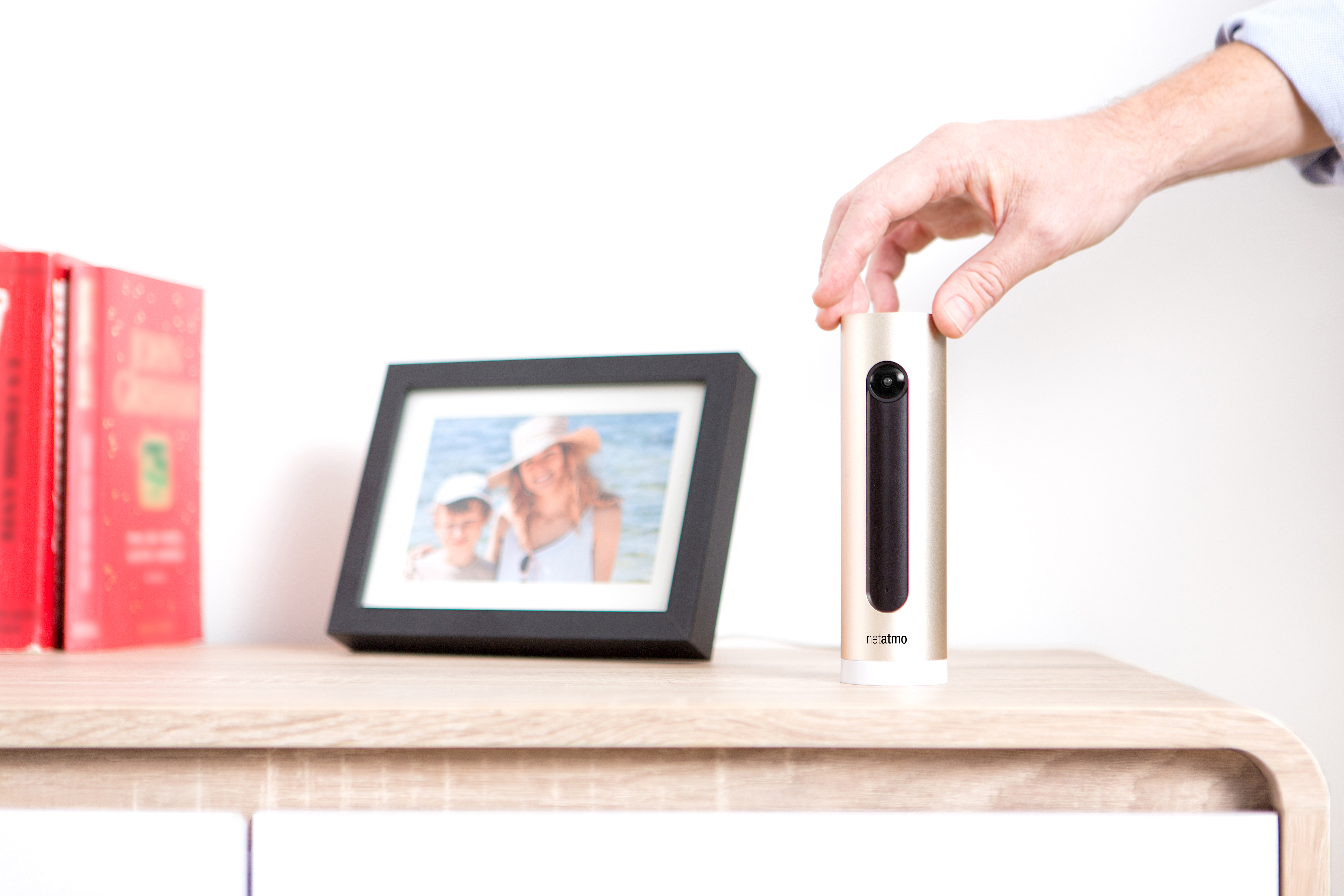
How do an IP camera’s detection systems work?
All IP cameras are able to detect motion. Cameras equipped with a microphone are also able to detect loud noises (a broken window, for example; some IP cameras can even detect a smoke detector’s alarm). In both of these cases, what an IP camera is really detecting are the differences between two successive images or sounds; if any differences are detected, the camera will conclude that an object has moved or a noise has been produced. This type of analysis is not infallible since a sudden change in a room’s light intensity or the movement of a curtain in an air current could cause a false alarm. In order to reduce the risk of these false alarms from occurring, D-Link and Netgear allow you to lower the detection sensitivity of their cameras. Nest’s cameras, on the other hand, rely on highly efficient algorithms to discern real events from false alarms (these algorithms are only operable if you purchase Nest’s cloud storage service!).
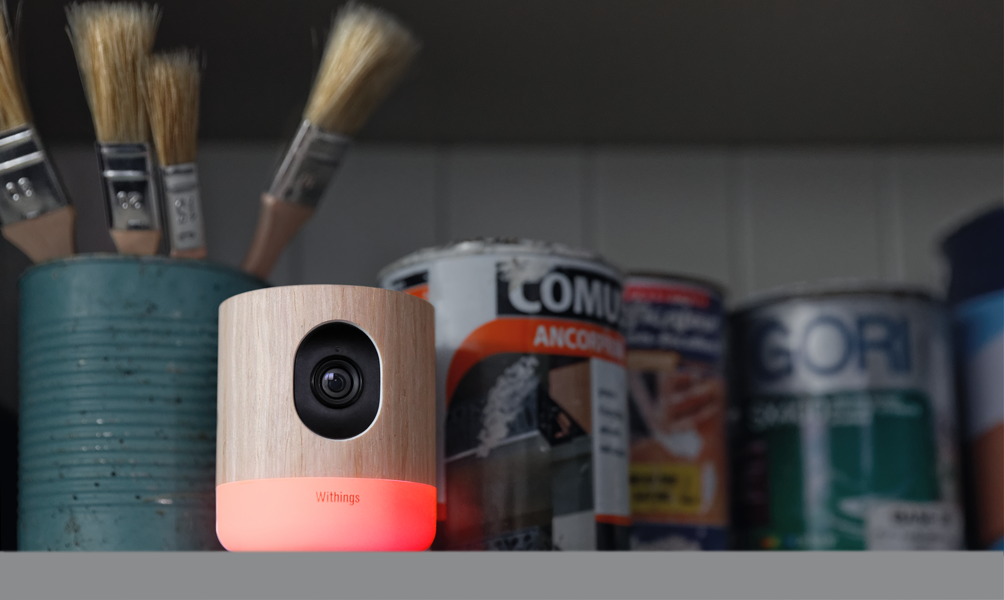
No matter what type of technology an IP camera employs, a house pet passing in front of it could still be interpreted as anomalous motion. IP cameras are not “immune to cats and dogs” contrary to a professionally calibrated alarm system. However, there are ways around this problem: either orient your camera so that its field of view does not include the floor or use your camera’s application to delimit a detection zone above floor level. This type of delimitation setting is only available on Somfy Protect, Netgear and D-Link products. The Nest Cam can also be calibrated in this way (but, once again, only if you purchase Nest’s cloud storage service!).
How will you be notified in the event of a break in?
You will be notified via your camera’s mobile app in the event of a problem such as the detection of anomalous motion in your absence. Whether you use the iOS or Android version of your camera’s app, make sure that it loads whenever you power on your smartphone and that it continues to run as a background application. Obviously, your smartphone will need to be connected to the internet via WiFi or your mobile carrier’s network in order for you to receive alerts in real time. Some cameras also offer to send you an alert via email – two alerts are always better than one.
Will an IP camera work during a power failure?
An IP camera will not function during a power failure! While Netgear’s Arlo Pro 2 is battery powered, it is not equipped with internal storage memory. What’s more, the radio relay that wirelessly receives your IP camera’s images, as well as your internet box, will not work during a power failure since they are not battery powered. Most IP cameras will send you a notification to indicate that they have experienced a disconnection or power failure.
Would hooking your IP camera and internet box up to an inverter (battery backup) allow your surveillance system to function during a power failure? Not necessarily; if your entire neighborhood experiences a power failure, it is likely that your internet service provider’s infrastructure will also be affected. Ultimately, these simple IP surveillance systems are not as resilient as more comprehensive (and much more expensive) alarm systems which are often equipped with a backup battery system and are capable of sending alerts via the mobile phone network thanks to a built-in SIM card.
Can an IP camera communicate with other connected objects?
Most IP cameras are able to integrate themselves into a Smart Home’s ecosystem of connected objects and internet services. Generally speaking, communication between devices is not achieved via a direct connection, but rather via a network or the internet. For instance, a Nest camera can communicate with other Nest products (thermostat, smoke detector); it can also communicate with other objects that are compatible with the “Works with Nest” protocol (such as Philip’s Hue or Lifx LED light bulbs) as well as with other products via the IFTTT protocol. Netatmo’s Welcome and Netgear’s Arlo Pro 2 are also IFTTT compliant. IP cameras are also becoming increasingly compatible with voice assistants (such as Google’s Home assistant) as these systems become available in France – as Amazon’s Alexa and Apple’s Homepod recently have.
Who are you legally allowed to film?
While there is no law stopping you from placing a camera in your own home for personal use, this doesn’t mean that you are allowed to film anything you want. You are not allowed to film a public street or your neighbor’s house, for example. It is a question of respecting the privacy of other people – a concept enshrined in Article 9 of the Civil Code. This principle also applies to all of your family members; your camera will need to respect their privacy as well.
If you hire someone to work in your home (babysitter, etc.), labor laws require that you inform this person of the presence of a camera in your home (this information could be included as a clause in a work contract, for example). In the event that you do record an employee, you will need to make a declaration to the CNIL (French data protection commission) to this effect. In this case, you will also not be allowed to keep more than 30 days worth of recordings.
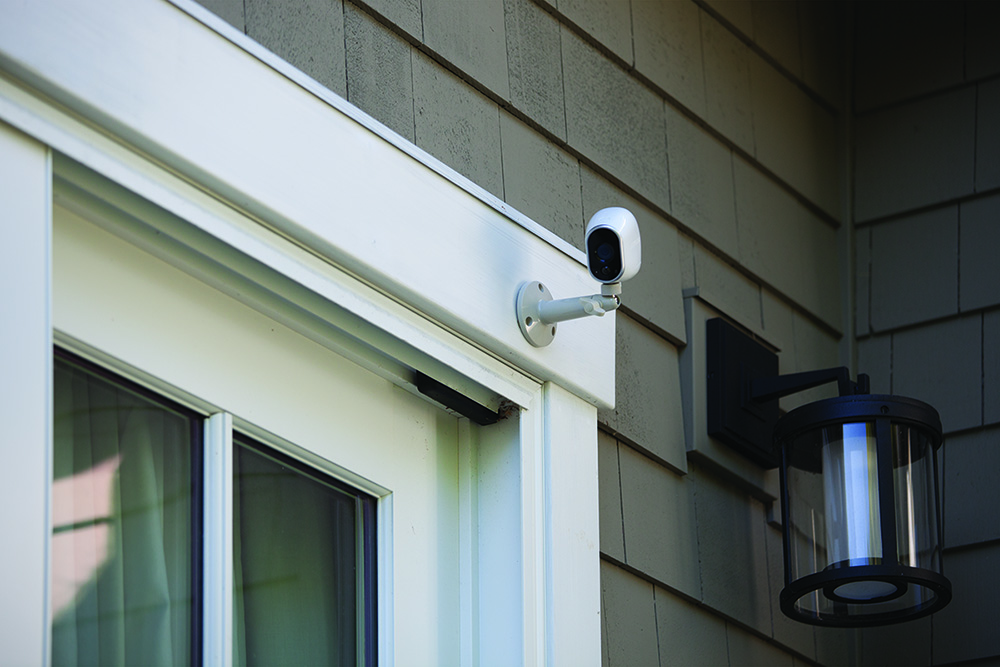
Can IP cameras be hacked?
Like any device connected to the internet, all surveillance cameras are susceptible to hacking. Sometimes ill-intentioned computer experts will take advantage of the security breaches they discover in these systems. A few years ago, the specialized search engine Shodan made front page news by allowing anyone to access poorly protected surveillance cameras. However, there is no real cause for alarm; the risk of being hacked is infinitesimally small provided that you take a few simple precautions.
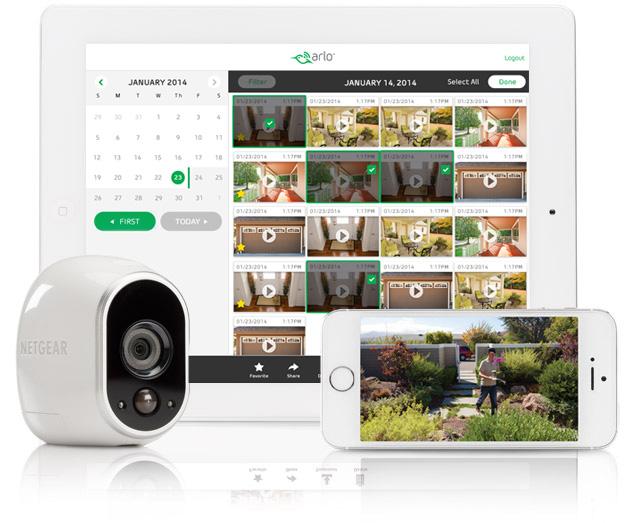
Lastly, any camera that relies on cloud storage will, necessarily, be more vulnerable than one that stores files locally. Nevertheless, your camera’s connection to its cloud storage server (which is usually located in a highly secure place) is encrypted and even if a hacker did manage to exploit a security breach in the server, there is very little chance that he/she would be able to locate your video recordings.
Best IP surveillance camera:
Nest Cam
Nest’s camera has Full HD image quality (among the best of any camera in this buyer’s guide) as well a highly practical magnetic mount and several very interesting features such as image zone delimitation and the ability to be programmed to follow a calendar schedule. Unfortunately, some of this camera’s features only become operational upon subscribing to one of the manufacturer’s cloud storage service plans (starting at 5 dollars/month for 5 days of recordings).
Withings Home
The Home goes beyond the strict definition of “security” by also measuring the quality of the air in your home. The Home can also be used as a baby cam and is equipped with a night light and the ability to play soothing music. While its image quality is excellent, the Home’s security functions are quite basic. Its microphone is also too sensitive and causes echoes. The manufacturer’s offer of 48 hours of free video stream cloud storage (of recordings triggered by motion detection) is a welcome feature despite the mediocre fluidity of this type of video recording.
D-Link DCS-935L
This inexpensive camera does not provide any form of video recording. It will be up to you to view its video stream in real time (and manually capture screenshots of your intruder) in the event that it detects any motion. That having been said, its image quality is quite good and its application is quite easy to use despite lacking some refinements. Our main complaint about this D-Link camera concerns its installation since it comes with incomplete instructions and not everyone will have a good enough understanding of computer networks to install it properly…

